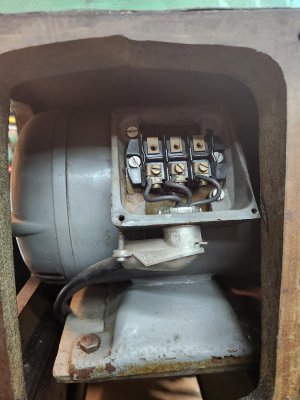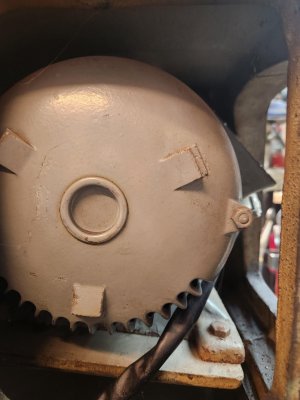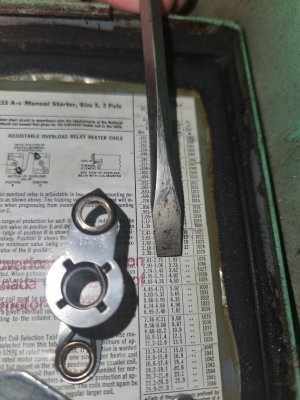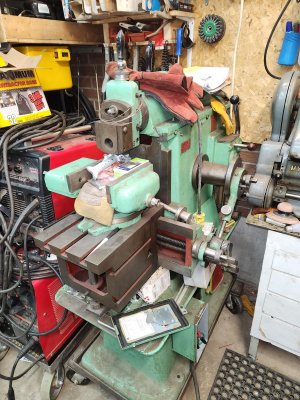Dan Dubeau
Ultra Member
Long story short.....I have no idea what Voltage my Shaper runs at. This thing has been holding my floor down for about 13 years now, and It's time to get it moving under it's own power......
I bought it from a coworker in 2010 (he bought it in the mid 2000's), He bought it because it was cool, but hardly ever used it. I bought it because it was cool.......it was actually my first machine tool and it's sat in almost every corner of my shop during the many transformations lol. We haven't worked together in about 7-8 years now, but he thinks it was 575, whereas I seem to recall it being 240v 3 phase. Specifically due to the fact that I remember the story about him having to buy a step up transformer when he bought his mill later, because his phase converter was only 240v at the time, and I also kind of remember him wiring it up directly to his idler motor in his shop and running it for me when I bought it. Recalling that story to him, neither us us are sure anymore......
Anyway, there is no name plate on the motor or this would be a pretty pointless thread . It's buried in the casting, and somewhat tough to see all around. I've pulled off every cover and looked it all over as best I can with an inspection mirror where I can get one, but short of pulling the motor out to see if anything is written on it somewhere or on the bottom are there any simple tests with a multimeter, or other ways one can use to tell the winding voltage, or at least make an educated guess between 240 and 575. I know it's 3 phase.
. It's buried in the casting, and somewhat tough to see all around. I've pulled off every cover and looked it all over as best I can with an inspection mirror where I can get one, but short of pulling the motor out to see if anything is written on it somewhere or on the bottom are there any simple tests with a multimeter, or other ways one can use to tell the winding voltage, or at least make an educated guess between 240 and 575. I know it's 3 phase.







The only numbers on it, mean nothing to me, but maybe to someone? Under where the nameplate should be was stamped 1, then under it 2531177
Beside the junction box is stamped A, 203, A, and on the other side 7974.
Pretty sure they're useless manufacture markings, but ?



I started off about 60% sure it's 240v but the 40% uncertainty is that this is a Canadian industrial machine, and being 240v 3ph would be pretty rare. A lot can happen to a machine over the years though (Like a nameplate falling off.), so there's no guarantees. But the paint on the motor is from the same time CB flipped it. I was hoping there'd be a note or piece of paper tucked inside one of the covers, but nothing. The wire to the motor doesn't have any discernable voltage rating on it (I didn't strip it back), but the wire coming out the switch is 600v rated. Again, no gurantee of anything, BUT the motor wiring does look a little small though, doesn't it, which leans me back towards the 575 side a lot.....

Last question. How bad would it be to simply hook it up to a 240v vfd to try it? I'd guess it around 2hp or under just based on size. My vfd should be fine to handle the current draw, but theres always the unknown.....If it IS 240v, great, motor should hum as intended. If it's 575, what am I in for? Cooking the windings would be bad, but not the end of the world. Frying my VFD would be something I would not like to do........I "think" it would be fine to run for a short period of time and nothing bad would happen. Perhaps run hot, or not at rated specs (whatever they are), but nothing catastrophic. Probably much worse the other way running a 240v on 575. Would be nice to know though.....
I bought it from a coworker in 2010 (he bought it in the mid 2000's), He bought it because it was cool, but hardly ever used it. I bought it because it was cool.......it was actually my first machine tool and it's sat in almost every corner of my shop during the many transformations lol. We haven't worked together in about 7-8 years now, but he thinks it was 575, whereas I seem to recall it being 240v 3 phase. Specifically due to the fact that I remember the story about him having to buy a step up transformer when he bought his mill later, because his phase converter was only 240v at the time, and I also kind of remember him wiring it up directly to his idler motor in his shop and running it for me when I bought it. Recalling that story to him, neither us us are sure anymore......
Anyway, there is no name plate on the motor or this would be a pretty pointless thread

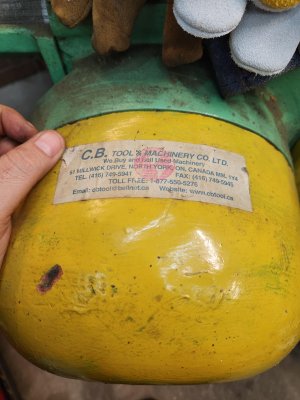

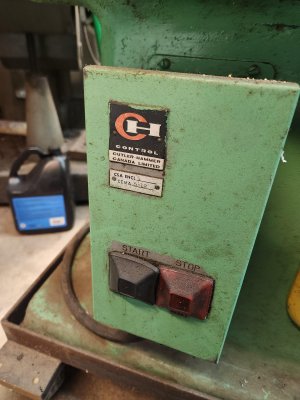

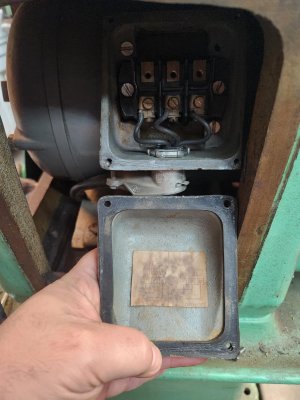
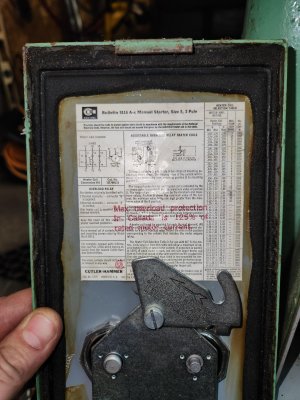
The only numbers on it, mean nothing to me, but maybe to someone? Under where the nameplate should be was stamped 1, then under it 2531177
Beside the junction box is stamped A, 203, A, and on the other side 7974.
Pretty sure they're useless manufacture markings, but ?
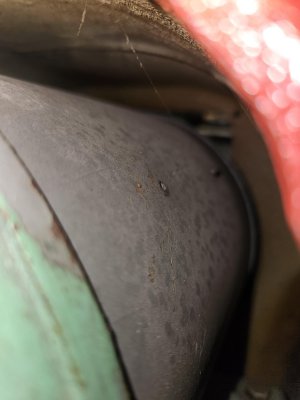

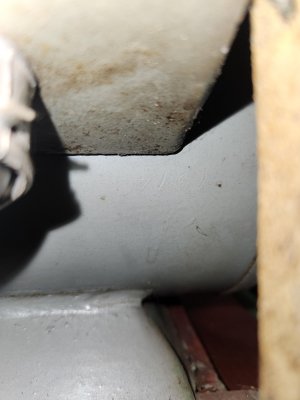
I started off about 60% sure it's 240v but the 40% uncertainty is that this is a Canadian industrial machine, and being 240v 3ph would be pretty rare. A lot can happen to a machine over the years though (Like a nameplate falling off.), so there's no guarantees. But the paint on the motor is from the same time CB flipped it. I was hoping there'd be a note or piece of paper tucked inside one of the covers, but nothing. The wire to the motor doesn't have any discernable voltage rating on it (I didn't strip it back), but the wire coming out the switch is 600v rated. Again, no gurantee of anything, BUT the motor wiring does look a little small though, doesn't it, which leans me back towards the 575 side a lot.....

Last question. How bad would it be to simply hook it up to a 240v vfd to try it? I'd guess it around 2hp or under just based on size. My vfd should be fine to handle the current draw, but theres always the unknown.....If it IS 240v, great, motor should hum as intended. If it's 575, what am I in for? Cooking the windings would be bad, but not the end of the world. Frying my VFD would be something I would not like to do........I "think" it would be fine to run for a short period of time and nothing bad would happen. Perhaps run hot, or not at rated specs (whatever they are), but nothing catastrophic. Probably much worse the other way running a 240v on 575. Would be nice to know though.....

